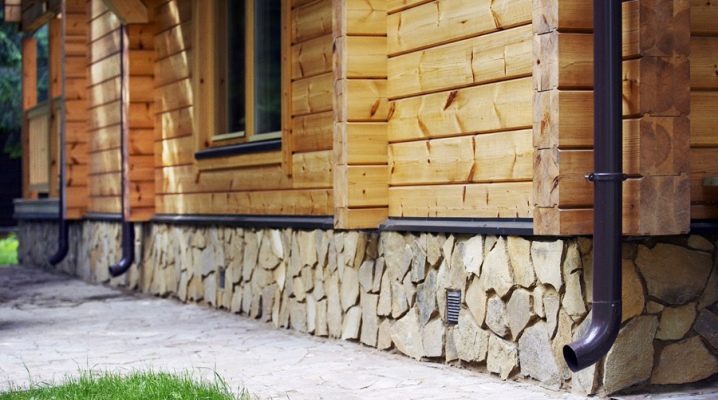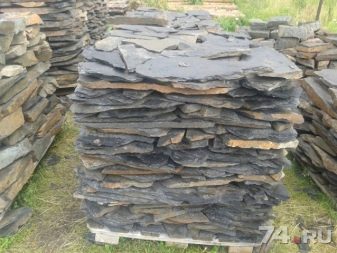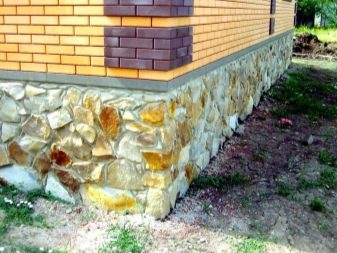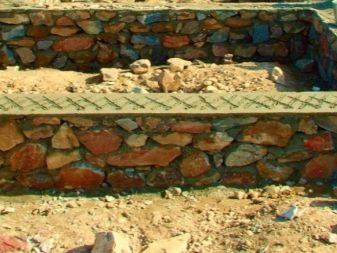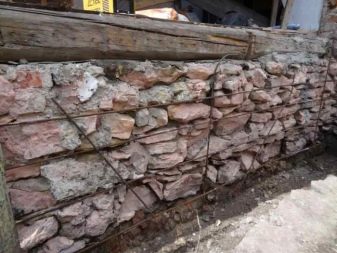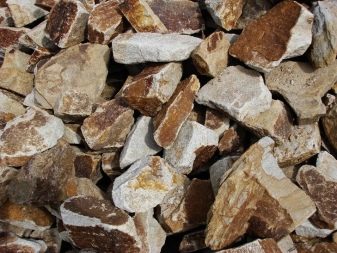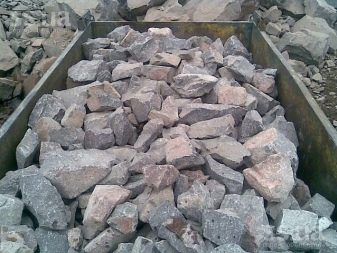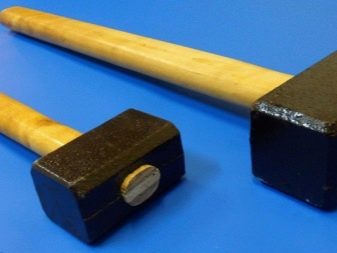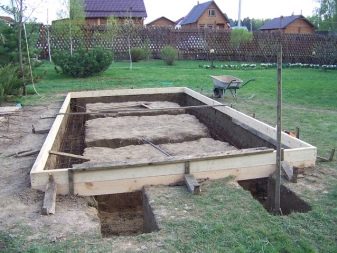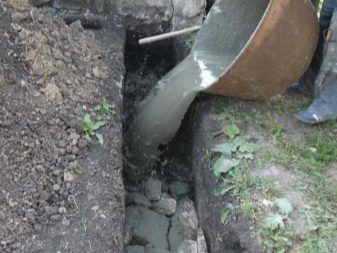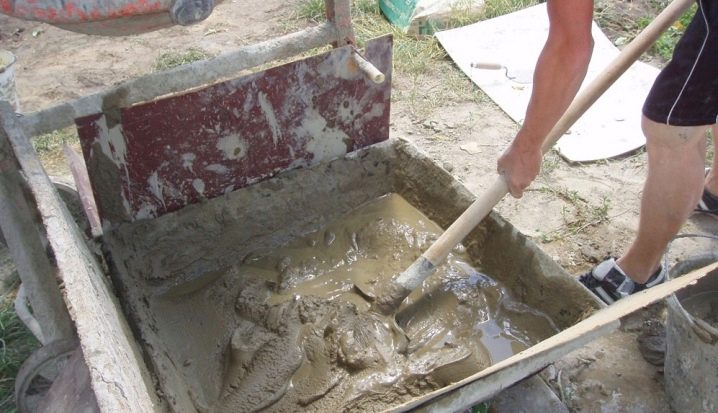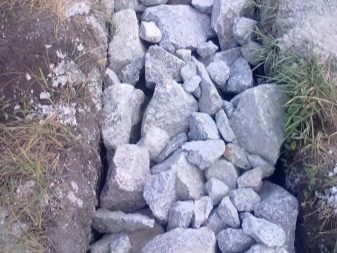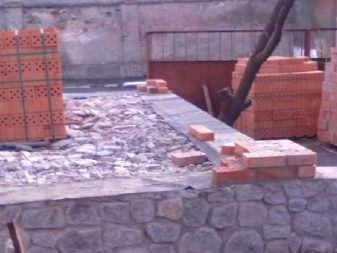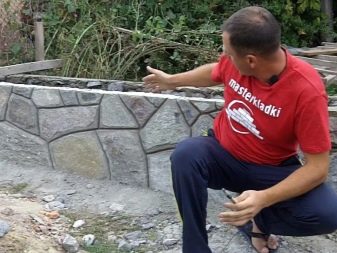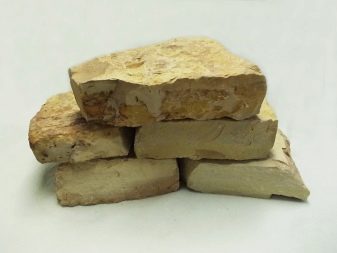Foundation of stone
The foundation is the foundation of the building, ensures the stability and durability of the entire building structure. Recently, the laying of the foundation is made mainly with the use of concrete. However, the foundation of stone is not less durable, besides it has an original and aesthetic appearance. A significant advantage is the fact that the laying of the stone base of the building is doable with your own hands.
Material Features
For the construction of the base of buildings and basements mainly rubble stone is used. This material has been used for such purposes for many centuries. The choice fell on this type of stone is not accidental. Rubble stone is very durable.An important role is played by its availability, and, therefore, relatively low cost. Extraction of rubble material is not more difficult than the process of extraction of natural clay.
Bout is mined in two ways: by blasting and chipping in quarries or by natural destruction of the rock.
The most suitable for the construction of the foundation is a slab-slab. The fragmentation elements of this breed have a relatively flat shape, which makes its laying more convenient.
To begin, consider the advantages of the foundation of stone material.
- High strength. Natural stone is practically unbreakable and deformed. This will provide the entire building with a solid foundation without sagging, cracking and the formation of damage.
- The material is environmentally friendly. Crushed rock is extracted from natural storerooms. There are no artificial impurities in the stone, it is not subjected to any chemical treatment.
- Natural stone is very resistant to temperature and atmospheric factors. Rubble stone is quite moisture resistant.
- Aesthetic appearance of the base. The rubble stone may have different colors and textures.Often on the chipped stone one can observe very beautiful natural patterns from the veins of the rock.
- The material is resistant to microorganisms: fungus, mold. Insects also cannot damage it.
- Rubble stone is available at a cost, as its mining is not labor intensive. It is not rare or scarce.
It is useful to recall the difficulties that may arise in the process of building a stone foundation.
- The adjustment of stones in the process of laying is somewhat complicated. Since the material is mined by the method of spalling and does not undergo further processing, the elements retain their natural free form and vary in size. For a dense and uniform installation requires time for the optimal selection of stones for each layer.
- Additional time and effort will need to be spent on preparing the cement or concrete mortar. It is necessary for bonding stone elements together.
- The rubble stone is unsuitable for laying the foundation of multi-storey buildings.
Tips for choosing
When choosing a wild natural stone should be well inspected frag elements. On the stone there should be no defects in the form of cracks or delamination, it should not crumble.
It is necessary to make sure that the lot has at least 90% of a large stone, and its color is uniform and the same.
The most convenient for laying are flat stones.
The strength of the rock can be checked by applying a force to the material. For this you need a heavy massive hammer. After making a strong blow to the stone, a ringing sound should be heard. This indicates the good quality of this breed. Durable stone will preserve integrity and will not be subjected to splitting.
The material should not be too porous. To check the water resistance of a stone, it is necessary to observe how it reacts to contact with water. If the rock is actively absorbing water, it is unsuitable for construction.
The foundation of stone with their own hands
Required tools:
- hammer;
- level;
- plummet;
- tamper;
- hammer pick;
- chisel;
- sledgehammer;
- measuring tape;
- sovok and bayonet shovel.
The first stage of work consists in the preparation of the territory.
- The surface is cleared of debris and vegetation.
- Further marking is carried out according to the size of the base of the building under construction. By this marking trenches are being laid for laying stone.Their depth should be at least 80 cm, width not less than 70 cm. The depth of the laying trenches directly depends on the degree of soil freezing during the cold season.
- Installs formwork.
- At the bottom of the trenches sand is poured a small, about 15 cm, layer. Next is filling with water and tamping. After falling asleep gravel or small crushed stone.
Stone laying
Before starting the laying of the stone foundation of the house, it is necessary to prepare a concrete or cement mortar. On average, 1 part of the stones consumes 1 part of the laying solution. The cement composition is prepared according to the following proportions: 3 kg of sand is taken for 1 kg of cement, the mixture is diluted with water until a flowing mass is obtained. The solution should not be thick, since in this case it will not be possible to fill it with voids and gaps between the stone elements.
Concrete solution is prepared according to the manufacturer’s instructions. For the convenience of laying stone elements, you should stretch the guide tape or thread along the perimeter of the formwork walls. The foundation stone must first be soaked in water for at least an hour.
You must follow the rules of masonry for the construction of a solid foundation.
- The first row of the base is laid out of the largest stones. Elements should be selected in such a way that between them there is practically no free space. Hollows are filled with prepared masonry mortar. Before this, the structure is compacted by tapping with a hammer.
- The second layer is laid in such a way that the seams below the running layer are covered with stones. Elements should also be selected in such a way that the gap is minimal. This rule is unchanged for the entire height of the stone foundation.
- In the corners of each subsequent row, stones should be laid up to 30 cm high. They will play the role of peculiar "beacons" to control the uniform height of the rows.
- The last row requires very careful selection of stones. It is final and should be as smooth as possible.
- When the laying is completed, the formwork is removed. After that, the gap between the wall of the trench and rubble masonry is filled with small stones or stone chips. This backfill will in the future serve as a good drainage layer.
- The design is protected by a reinforcing belt. He will hold the armature.Steel rods with a diameter of 10-12 mm are placed in a reinforcing belt with a pitch of 15-20 cm.
- For additional reinforcement, steel rods are tied with knitting wire.
The reinforcement frame can be made independently, or ordered ready by the measurements taken after laying the stone foundation. On the strengthening framework waterproofing material keeps within. Next is further building on the building.
Expert advice
If you chose a natural stone for the foundation, use the advice of professionals.
- For better adhesion of the stone to the masonry mortar, the material should be well cleaned.
- Masonry construction should be as monolithic as possible. Clearances and voids are minimized by picking stones.
- The thickness of the concrete or cement composition should not be more than 15 mm. Increasing its thickness increases the likelihood of subsidence of the whole structure.
- Corner stones are subject to more careful selection. They are supporting and must have high strength. A visual inspection should be made for cracks or damage. Not superfluous will be a power test of strength with the help of a blow with a heavy hammer or sledge hammer.
- It is necessary to advance in the project technological holes in the foundation: ventilation, vents, plumbing and sewer communications.
- In the presence of large gaps and the impossibility of eliminating them, it is recommended that a small stone, stone powder or crushed stone be filled into the cavity.
- It is advisable to use a layered booth for laying the first and last rows of the foundation, as it has the most even planes. This will ensure the design stability. The final row serves as the basis for the further superstructure of the building, so it is important that the surface of the stone layer be as smooth as possible.
The basics of masonry rubble - in the next video.
